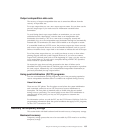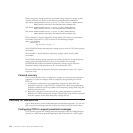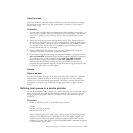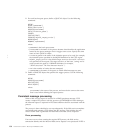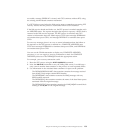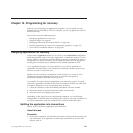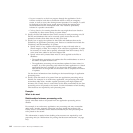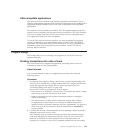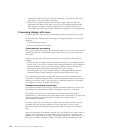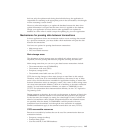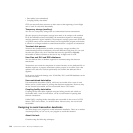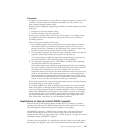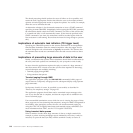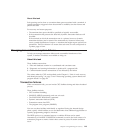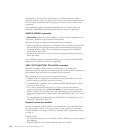
SAA-compatible applications
The resource recovery element of the Systems Application Architecture
®
(SAA)
common programming interface (CPI) provides an alternative to the standard CICS
application program interface (API) if you need to implement SAA-compatible
applications.
The resource recovery facilities provided by the CICS implementation of the SAA
resource recovery interface are the same as those provided by CICS API. Therefore,
you have to change from CICS API to SAA resource recovery commands only if
your application needs to be SAA-compatible.
To use the SAA resource recovery interface, you need to include SAA resource
recovery commands in your applications in place of EXEC CICS SYNCPOINT
commands. This book refers only to CICS API resource recovery commands; for
information about the SAA resource recovery interface, see the CPI Resource
Recovery Reference manual.
Program design
This section tells you how to design your programs to use the CICS recovery
facilities effectively.
Dividing transactions into units of work
You must decide how to implement application processing units in terms of
transactions, units of work, and programs.
About this task
You are recommended to plan your application processing units using the
following advice:
Procedure
1. In programs that support a dialog with the user, consider implementing each
unit of work to include only a single terminal read and a single terminal write.
Using this approach can simplify the user restart procedures (see also
“Processing dialogs with users” on page 144).
Short units of work are preferable for several reasons:
v Data resources are locked for a shorter time. This reduces the chance of other
tasks having to wait for the resource to be freed.
v Backout processing time (in dynamic transaction backout or emergency
restart) is shortened.
v The user has less to re-enter when a transaction restarts after a failure.
In applications for which little or no re-keying is feasible (discussed in
question 9 under “Questions relating to recovery requirements” on page 101),
short units of work are essential so that all entered data is committed as
soon as possible.
2. Consider the recovery/restart implications when deciding whether to divide a
transaction into many units of work.
CICS functions such as dynamic transaction backout and transaction restart
work most efficiently for transactions that have only one unit of work. But
there can be situations in which multiple-unit of work transactions are
necessary, for example if a set of file or database updates must be irrevocably
Chapter 13. Programming for recovery 143



